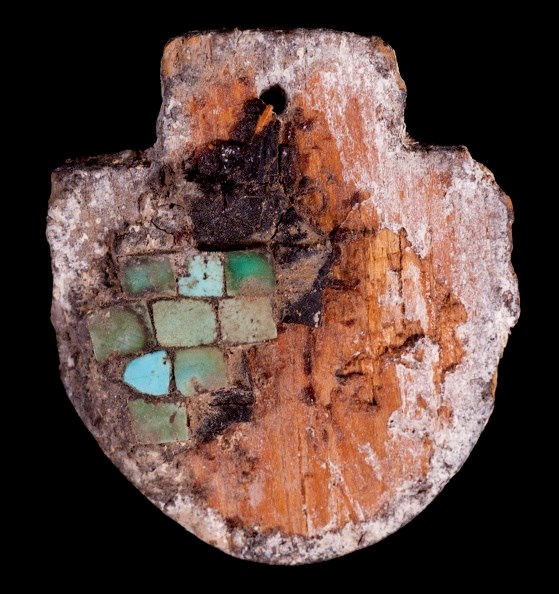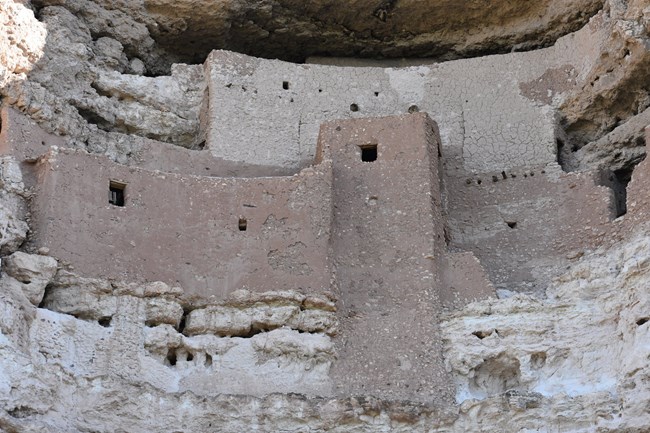Who were the Sinagua?Imagine you were living in the Verde Valley 900 years ago. How would your life be different?The Sinagua were the group of people who lived in the dwellings at Montezuma Castle and Tuzigoot. Although people were living in the area much earlier, the Sinagua began building permanent living structures – the dwellings you see at the monument – around 1050 CE.The name “Sinagua” comes from the Spanish “sin agua,” meaning “without water.” Despite the name, the Sinagua actually had plenty of water. The group was named by Harold S. Colton in 1939, after the San Francisco Peaks, where Colton first identified the culture. (The peaks were called “sierra sin agua” by early Spanish explorers because they lacked rivers and streams.) Explore more about the Sinagua people's Trades, Arts, and Crafts. 
NPS Photo Sinagua CultureArcheologists divide the Sinagua into two groups: The Northern Sinagua, who lived in the modern-day Flagstaff area, and the Southern Sinagua, who lived in the modern-day Verde Valley. They share much in common, but there are a few cultural differences. Montezuma Castle and Tuzigoot National Monument protect Southern Sinagua dwellings. You can find Northern Sinagua dwellings at Wupatki and Walnut Canyon.Despite the differences, archeologists identify the Sinagua as one culture, meaning we think they had similar behaviors and beliefs. However, we do not know how the Sinagua would have identified themselves. They left behind similar artifacts, and because of this archeologists assume they practiced a similar culture. An artifact is anything made or altered by a human. These can be small objects, like jewelry, or larger objects, like buildings. Examples of some Sinagua artifacts include undecorated pottery, intricate cotton weavings, and the building styles of the dwellings at Montezuma Castle and Tuzigoot. The Sinagua also traded for outside resources. Studying artifacts helps us learn about the everyday life of the Sinagua. 
NPS Photo by Nicholas Goodman Sinagua Housing
If you could live anywhere, where would you choose?The Sinagua were living in the Verde Valley as early as 650 CE, or maybe even earlier. The earliest houses they built were called pithouses, made by digging partially into the ground, inserting log posts, and covering the structure with plant material. The remains of one pithouse can be seen at Montezuma Well. Where did they go?The Sinagua did not disappear, but rather migrated away over time. Montezuma Castle was abandoned around 1400 CE, as were the dwellings at Montezuma Well. Although we do not know the exact reason, possible explanations include environmental change, overpopulation, social conflict, or religious reasons. Unfortunately the Sinagua had no written language, leaving us to piece together why they left.Although the Sinagua left about 600 years ago, the Verde Valley has been continually occupied by other groups of people. Some Hopi clans believe that the Sinagua were their ancestors. Some Yavapai-Apache say that not all Sinagua left, but instead integrated with the Yavapai and Apache. Today, the monument is affiliated with many tribes, including the Four Southern Tribes of Arizona, Yavapai, Apache, Hopi, and Zuni. As you visit our monument, or view our virtual tours, remember the impact that the Sinagua had and the many works they left behind for us to learn from. Imagine what this special place looked like 900 years ago – Bustling pueblos, thriving trade routes, families living together. What about the monument makes it special to you? Archaeology of the SinaguaClick here to learn more about the archaeological artifacts and remains of the ancient people who lived at Montezuma Castle. |
Last updated: June 16, 2023
